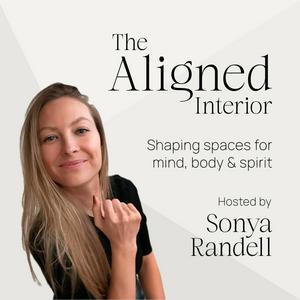Your Brain On Design: Exploring Neuroaesthetics with Dr. Oshin Vartanian, Part 1 Of A 2 Part Series
Why do some spaces instantly feel calming, focused, or inspiring, while others leave us anxious, uneasy, or drained? The answer lies in the science of neuroaesthetics and the often subconscious influence of space: how our brains respond to beauty, form, and function in the environments we inhabit, often without us even realizing it.In this episode, I sit down with Dr. Oshin Vartanian, one of the world’s foremost experts in neuroaesthetics and the psychology of architecture and design. We explore how your primal brain processes, and instinctively reacts to, elements like curves, ceiling height, natural materials, sacred spaces, and more.Dr. Vartanian is a Professor at the University of Toronto, where he explores the cognitive and neural foundations of creativity and aesthetics. He received his PhD in Experimental Psychology from the University of Maine and currently serves as President of the International Association of Empirical Aesthetics (IAEA). He is the former editor of Empirical Studies of the Arts and Psychology of Aesthetics, Creativity, and the Arts, and has co-edited several landmark volumes on the neuroscience of aesthetics, creativity, and decision making. All linked below in the Resources section.🧠 Dr. Vartanian’s research is foundational to understanding how interior environments influence the way we think, feel, and act. Shaping our behavior, supporting health, well-being and evoking emotional and awe-related responses often associated with sacred or contemplative spaces. Links to all these resources are available below.💭 Whether you're a designer, architect, wellness professional, holistic health enthusiast, or simply curious about the hidden power of your surroundings — this conversation will change how you see the world around you.🎧 Tap play to explore:How your primal brain and subconscious mind respond to interior spaces and design elementsWhat kinds of interior environments your brain is naturally drawn to, and whyThe surprising science behind curves, ceiling height, contrast, and natural elementsHow certain spaces can lower stress, support creativity, and spark aweWhy understanding the subconscious influence of space is key to health, well-being, and human potential👇 Drop a comment if something resonates, share this episode with someone who loves great design, and follow the show to catch Part 2 — coming soon!⏱️ Timestamps(0:00) Introduction(2:06) What is neuroaesthetics, and what led you to becoming a leading voice in the field?(3:50) Primal brain reactions to the built environment(6:37) Evolution, instinct, and space design(09:17) Why our brains prefer curvature(11:22) Spaces that lower stress and cortisol(25:58) Designing for transcendence: height and scale(30:05) What makes sacred spaces feel meaningful?(33:36) Creating flow and creative cognition through space(41:30) Nature and neuroaesthetic health benefits(48:48) Hierarchy of needs and interior design(53:08) Age, preferences, and designing public spaces🔗 ResourcesDr. Oshin Vartanian – University of TorontoInternational Association of Empirical Aesthetics (IAEA)Empirical Studies of the Arts – JournalPsychology of Aesthetics, Creativity, and the Arts – JournalNeuroaesthetics (Baywood Publishing)Neuroscience of Creativity (MIT Press)Neuroscience of Decision Making (Psychology Press)The Cambridge Handbook of the Neuroscience of Creativity (Cambridge)The Oxford Handbook of Empirical Aesthetics (Oxford)🎶 Music by: TELL YOUR STORY by ikson™Link: https://ikson.com/tell-your-story🛑 DisclaimerThe Aligned Interior Podcast is for general information only and does not constitute medical or mental health advice. The content of this podcast is not intended to be a substitute for professional medical advice, diagnosis, or treatment.The use of information on this podcast or materials linked from this podcast is at the user's own risk.


